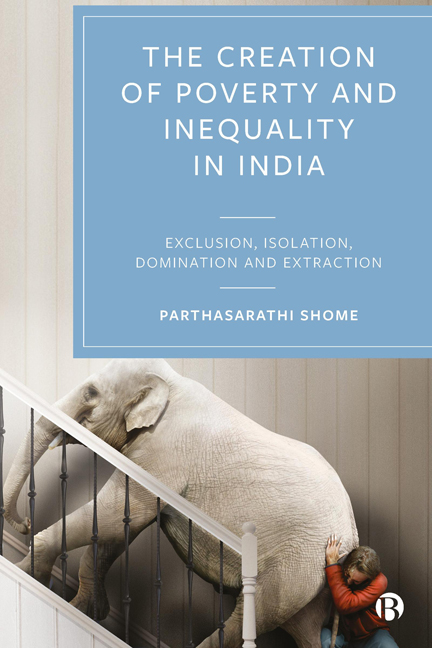Book contents
- Frontmatter
- Dedication
- Contents
- List of Figures and Tables
- Preface
- 1 Introduction
- Part I Macro-Economy and Human Development
- Part II Sources of Inequality and Poverty
- Part III Sectoral Effects
- Part IV Radical Humanism
- Appendix 2.1 Cash Use in India: A Cross-Country Comparison
- Appendix 2.2 Macro-Economic Comparisons: Selected Economies
- Appendix 4.1 Selected Country Tables
- Appendix 5.1 Evidence on Inequality in the US
- Appendix 8.1 Impact of Land Policy
- Appendix 11.1 Impact of Asset Transfer on the Poor
- Index
Appendix 8.1 - Impact of Land Policy
Published online by Cambridge University Press: 18 January 2024
- Frontmatter
- Dedication
- Contents
- List of Figures and Tables
- Preface
- 1 Introduction
- Part I Macro-Economy and Human Development
- Part II Sources of Inequality and Poverty
- Part III Sectoral Effects
- Part IV Radical Humanism
- Appendix 2.1 Cash Use in India: A Cross-Country Comparison
- Appendix 2.2 Macro-Economic Comparisons: Selected Economies
- Appendix 4.1 Selected Country Tables
- Appendix 5.1 Evidence on Inequality in the US
- Appendix 8.1 Impact of Land Policy
- Appendix 11.1 Impact of Asset Transfer on the Poor
- Index
Summary
There was a need to incorporate economic fundamentals in the legislation on land acquisition as proposed but that was lacking. Self-explanatory Figure A8.1 indicates how the price per unit of land supplied by farmers would be constrained reflective of government policy. It describes the agricultural land market in which government has entered with the objective of acquiring land on behalf of industry – public or private or in combination. S(L) is the supply curve of land which is a summation of distinct supply curves of individual farmers. While each farmer is likely to have a different valuation of his land asset and therefore possess a different price-to-supply relation, overall, the market sums up to S(L). Note that S(L) is upward sloping since more land will be offered in the market as a whole only as the price per unit of land increases.
On the other hand, the industrialist has a demand curve D(L) for land needed for his proposed project which reveals that he will tend to demand more land as its per unit price diminishes. However, he has a maximum per unit price, OF, which he will not venture to offer for the land he requires. It is important to point this out since governments, in particular some state governments, run to offer land at prices above which they tend to believe industry would not be attracted to invest.
If government did not intervene, then equilibrium in the market would occur at C, the demand– supply intersection, at a price of CL and the land exchanged would be OL. The problem is that this amount of land is insufficient for the project, the requirement being larger (OL). At this point, AB emerges as the measurement of mismatched prices, the suppliers wanting a price of AL per unit and the buyer offering only to pay BL per unit reflecting a mismatch in the demand and supply curves, AB at L. So, government intervenes to find ways to acquire OL amount of land, and usually at a per unit price of less than AL.
- Type
- Chapter
- Information
- The Creation of Poverty and Inequality in IndiaExclusion, Isolation, Domination and Extraction, pp. 312 - 315Publisher: Bristol University PressPrint publication year: 2023



